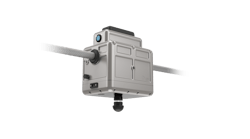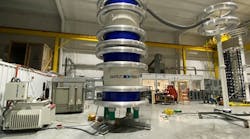An arc-flash analysis assessment is critical to the safety of employees and to ensure that facilities are in compliance with industry standards. Unless a realistic determination of the available fault current and protective device clearing times are made at each equipment location, it’s not possible to select the proper personal protective equipment (PPE) for electrical workers. Furthermore, the following industry standards now mandate that employers assess the arc-flash hazards to their employees:
- OSHA 29 CFR 1910.132 (d) requires that employers assess the workplace to determine if hazards are present, and that employees use the types of PPE needed to protect them from the hazards. Written certification must be furnished, verifying that a hazard assessment has been performed for each particular location.
- NFPA 70E-2004, Article 110.8 (B) (1) (b) requires that an arc-flash hazard risk analysis be performed to protect personnel from the possibility of injury. The analysis is used to determine the level of the hazard and the proper rating of the PPE for a given task.
- NESC Part 4, Section 41 requires that — effective Jan. 1, 2009 — employers ensure an assessment is performed, to determine the potential exposure to an electric arc for employees who work on or near energized parts of equipment.
Qualified personnel are needed to properly perform all aspects of an arc-flash analysis assessment and propose solutions for reducing incident arc-energy levels at locations that exceed PPE Level 2 . Typically electrical engineers having a thorough understanding of the short-circuit behavior of power systems, protective device coordination, and arc-flash mitigation techniques.
As specialists in electric power switching and protection, S&C’s Power Systems Services engineers are qualified to prepare such assessments, according to S&C. They can:
- Identify the equipment locations where an arc-flash hazard analysis is required
- Collect pertinent data at each location
- Prepare an appropriate system model and single-line diagram
- Prepare a short-circuit study to determine the three-phase bolted fault current at each location
- Prepare arc-flash calculations in accordance with NFPA 70E and IEEE 1584, using SKM and CYME software
- Determine appropriate personal protective equipment in accordance with risk levels defined in NFPA 70E
- Propose arc-flash mitigation solutions for locations that exceed PPE Level 2
- Calculate the arc-flash protection boundary distance
- Document the results and provide appropriate equipment labels
- Provide technical and safety training on arc-flash hazard.

